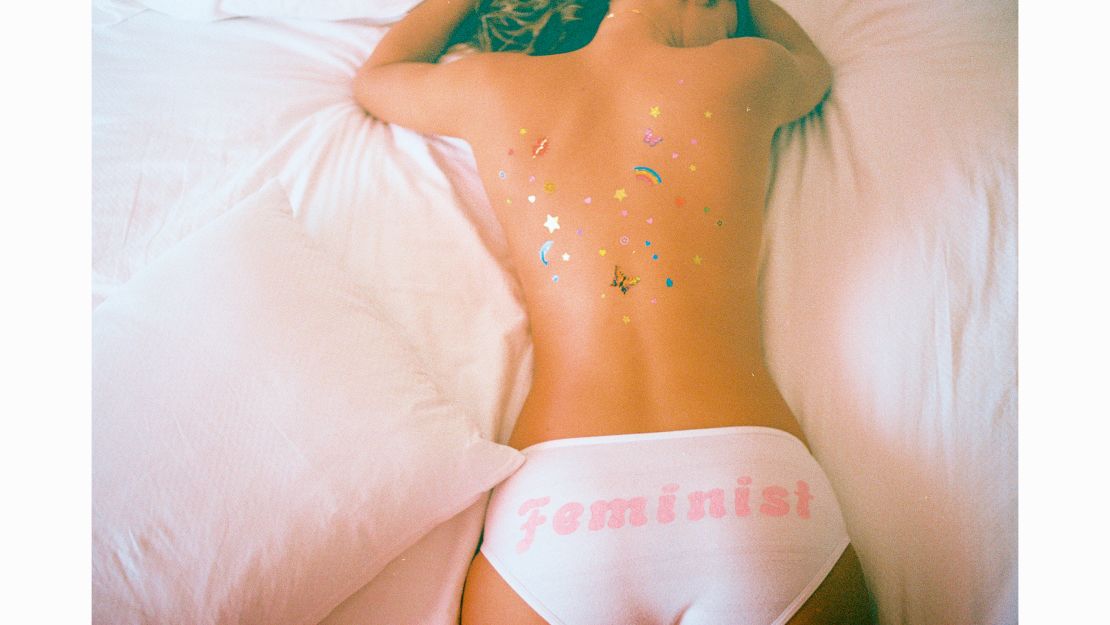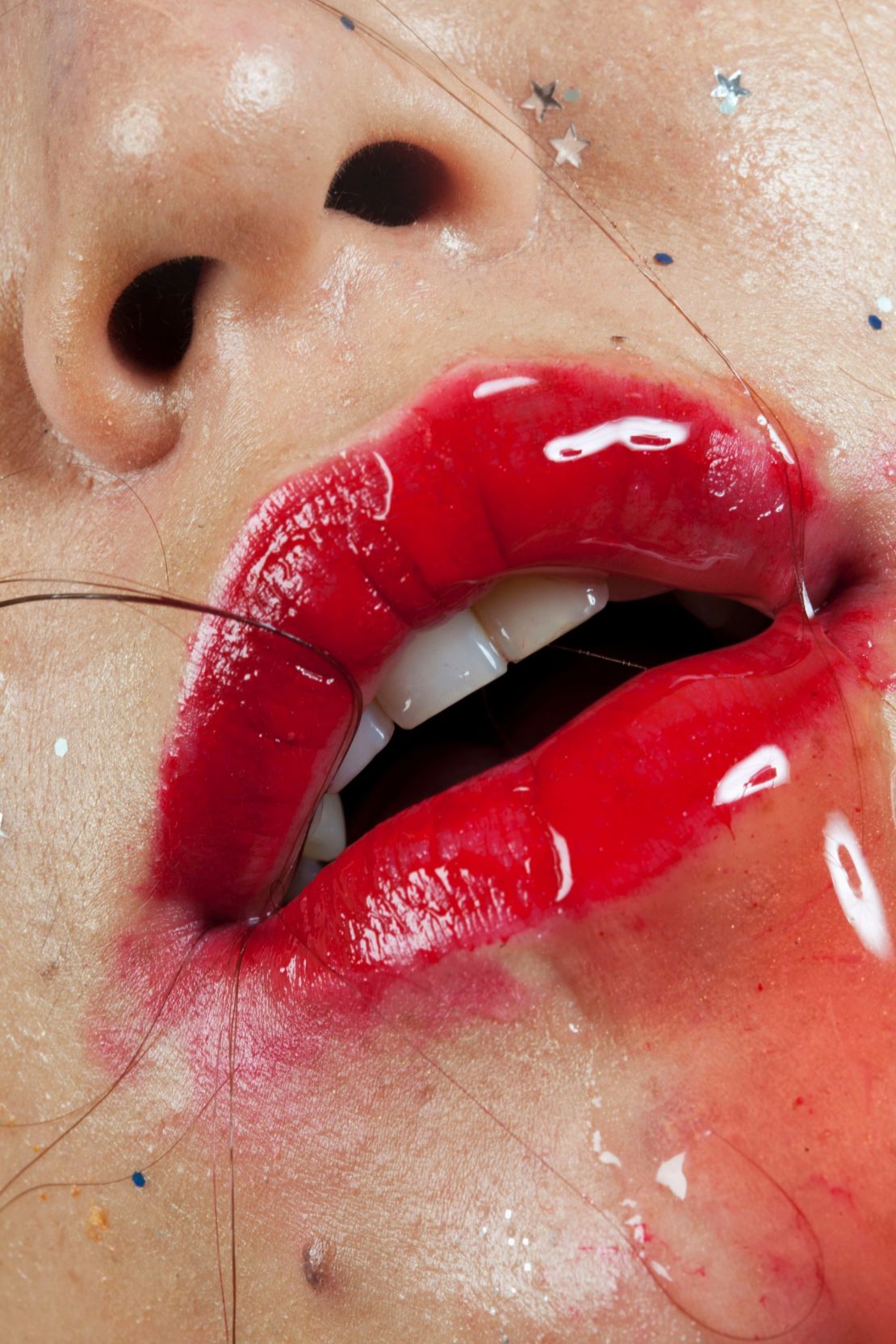Editor’s Note: Charlotte Jansen is a freelance journalist and editor-at-large at Elephant magazine. This is an edited excerpt from her new book, “Girl on Girl: Art and Photography in the Age of the Female Gaze,” published by Laurence King.
On my computer screen is a half-naked young woman. The flawless, golden brown skin of her back is decorated with a cornucopia of tiny, sparkly stickers of rainbows, stars, kisses, dolphins, butterflies.
Simple cotton underwear – powder pink to match the bed sheets she lies on – clasps to the cheeks of her bottom. Across the knickers a single word is printed in pink: “Feminist.”
This photograph, taken by Mayan Toledano, made me angry. It would pop up again and again in my field of vision and everywhere from the New York Times to Tumblr. If you’ve used the internet in the last two years, the chances are it will be familiar to you too, and perhaps you had the same gut reaction to it as me.
At the same time, it was making a huge impact. It seemed to capture the cultural predicament of the age of the female gaze: how should we look at women?
There is a fundamental pleasure in looking at women that is undeniable and unavoidable and tends to complicate the central place women have in visual culture. In the past, photographs of women were made by men for a capitalist economy to favor the male gaze and feed female competitiveness.

Female visibility is therefore a fallacy: we see photographs of women every day, but we are used to looking at them in a few specific contexts: on products and billboards, in shop windows and magazine covers, in erotica and pornography.
They appear similarly online, in the thick and fast slew of the trillion photographs we collectively produce and share every year. Yet photographs of women are far more provocative and complicated than these viewing circumstances prescribe.
Over the last five years, however, a growing number of the photographs of women we look at on a daily basis are being produced by women. The fact that women are taking more photographs of women – both themselves and others – than ever before is something that deserves attention.
Does it matter whether Toledano’s image was shot by a man or a woman? I believe it does.
At times, there seems to be little difference between how women photograph women and how men photograph women, but women have the right to self-objectify and to exploit without critique, just as men have been allowed to do since the earliest forms of art emerged. I’ve come to see the feminist knickers as the beginning of an imperfect but very important process of emancipation.
Photographs taken by women do not only exist as a counterpoint to the male narrative. A photograph is an impulse – and challenge – to enquire, not a representation of truth. More often than not, I find that the photographs of women by women I see point me back to my own prejudice and misconceptions.

In the hours I spent interviewing 40 artists from 17 countries for “Girl on Girl,” I was often surprised by the reasons for which women photograph women. They can be a way to understand identity, femininity, sexuality, beauty and bodies.
The photographs women take of women can be a tool for challenging perceptions in the media, human rights, history, politics, aesthetics, technology, economy and ecology; to get at the unseen structures in our world and contribute to a broader understanding of society. What you can get is not always what you might see.
At times, using the female body is only a means to an end: it’s a material that is available, over which the photographer-model has total ownership and final sovereignty.
“Girl on Girl” – as the title suggests – is ultimately a mediation on the agency women are taking over the images that are made of them. It’s an investigation into the use and meaning of female photography now, bringing to light the plurality of situations in which a photograph is created and seen.
The more we’re exposed to different types of photographs of women – more women than we will ever meet in real life – the more we can learn.
“Girl on Girl: Art and Photography in the Age of the Female Gaze” by Charlotte Jansen, published by Laurence King, is out now.














